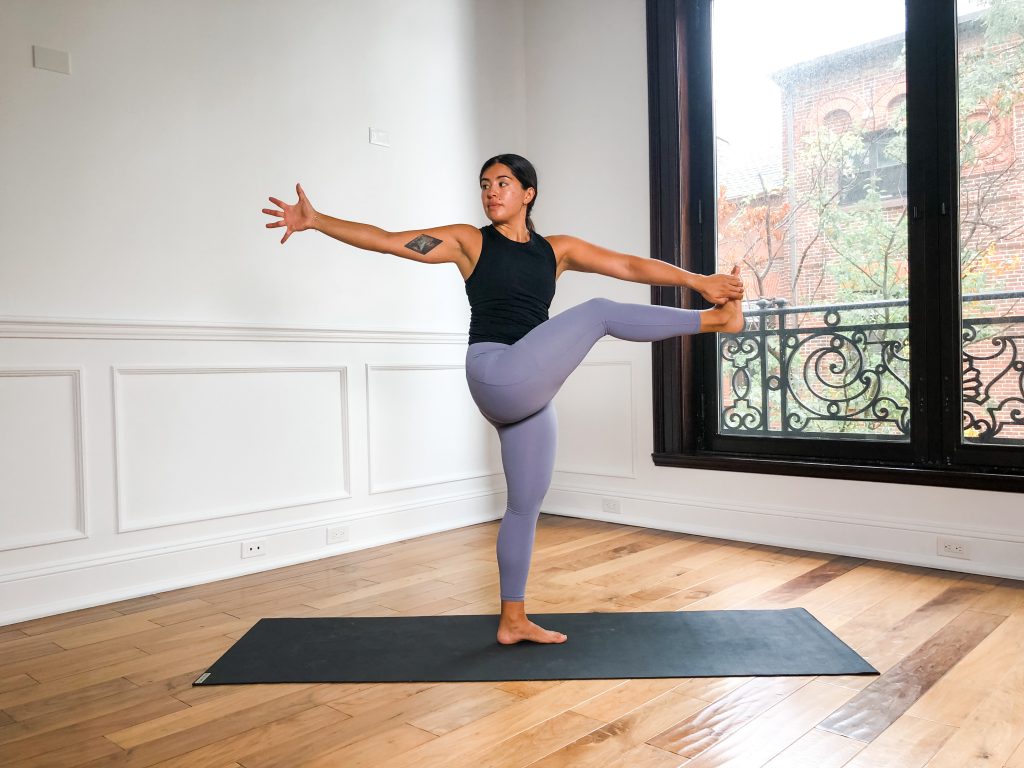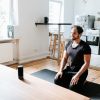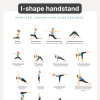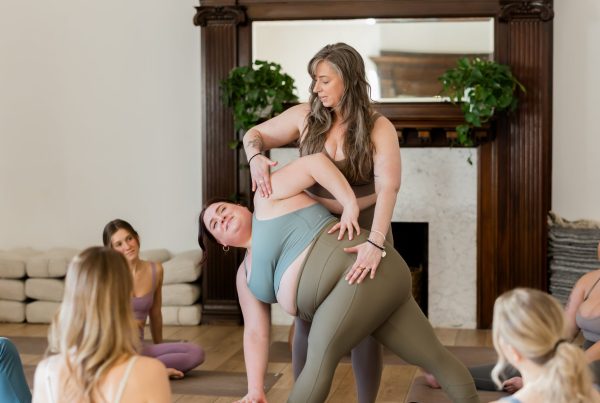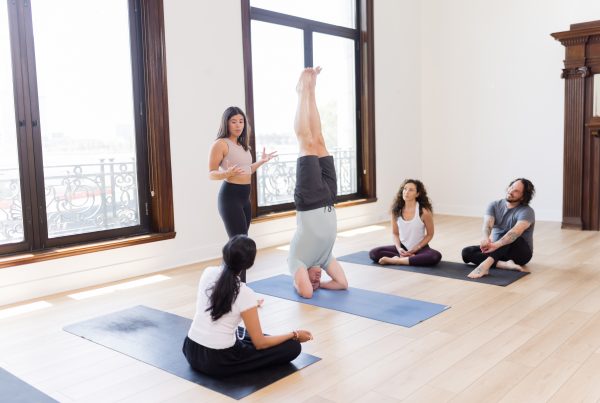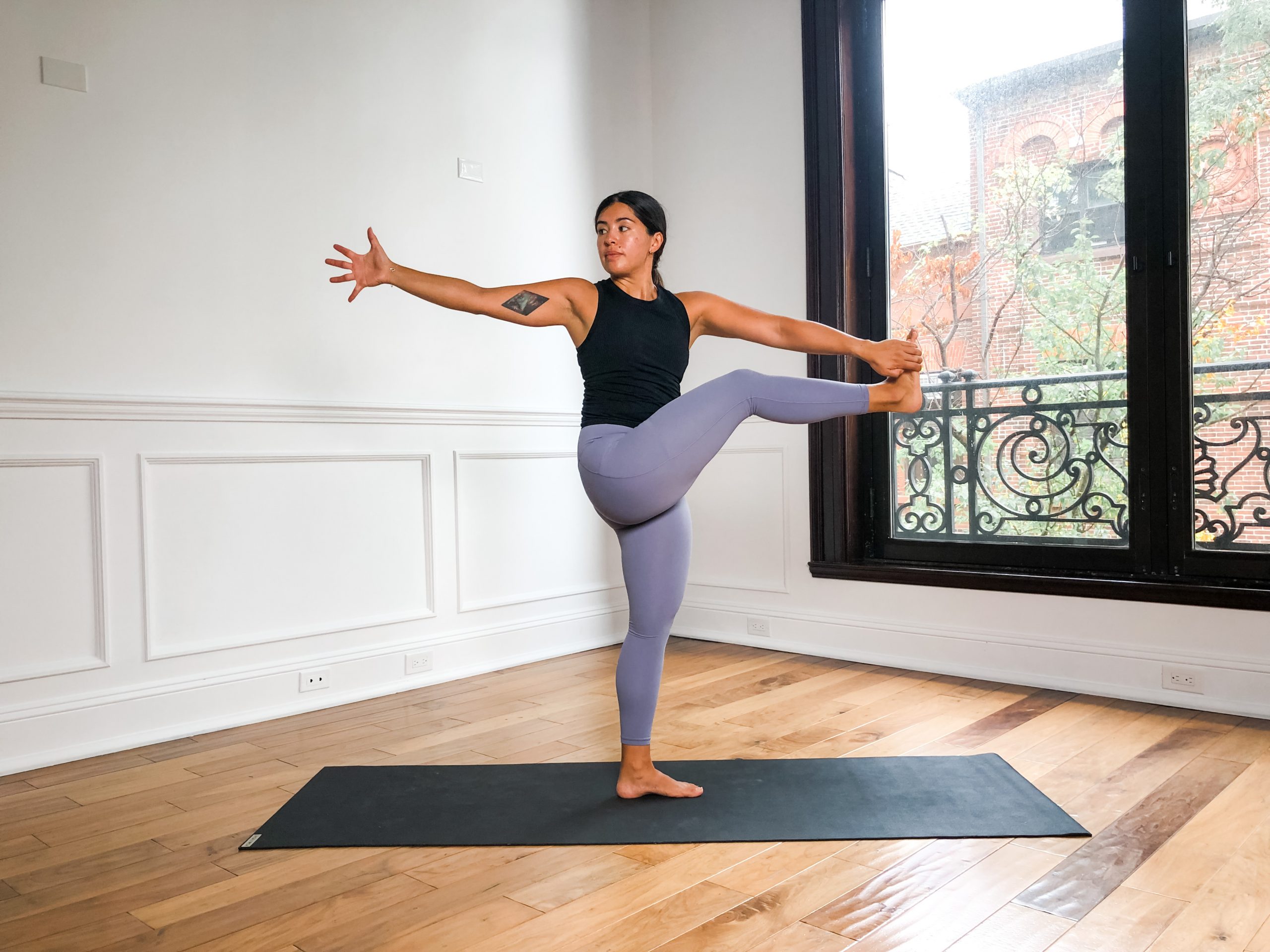
For this week’s class theme we’ll be focusing on second chakra, or the sacral chakra. In Sanskrit, second chakra is known as Svadhisthana and is located at the sacrum.
The body parts encompassed within second chakra are the lower back, lower abdomen, and the genitals.
Before we talk about the basic issues of second chakra, let’s review briefly what the chakras are. Chakra is translated to “wheel” or “disk.” The chakras are spinning energy centers in the body going from the tailbone up to the crown of the head. The chakras all rotate at a particular and different frequency allowing the proper flow of prana throughout the body. If any of the chakras are damaged, this can cause misalignments in various aspects of one’s life.
The Svadisthana chakra is all about movement, change, and emotions. In first chakra, one’s roots are grounded to build a strong foundation which supports one’s safety, security, and survival. After establishing safety, one can start to interact with the world through the senses and move towards pleasure, which requires the introduction of emotions.
The root chakra’s element is earth, while sacral chakra’s element is water.
Movement that flows like water incites change and change is what stimulates awareness. The combination of sensing life through our eyes, mouth, nose, ears, and skin and being aware of feelings which arise to change and stimulation around us is what allows us to live a truly rich life.
Movement, rhythm, and flow are some great elements to focus on if you wish to create an asana class around this sweet, flowing chakra.
Peak Pose: Extended Hand to Big Toe Variation C (Utthita Hasta Padangusthasana C)
Utthita Hasta Padangusthasana C (UHC) requires setting a strong foundation of the feet and legs and then using that foundation to twist open wide. There’s an element of twisting (and balancing) which requires steady focus and a softness of awareness and body to achieve a state of balance.
Supporting Pose 1: Wide Pyramid (Parsvottanasana)
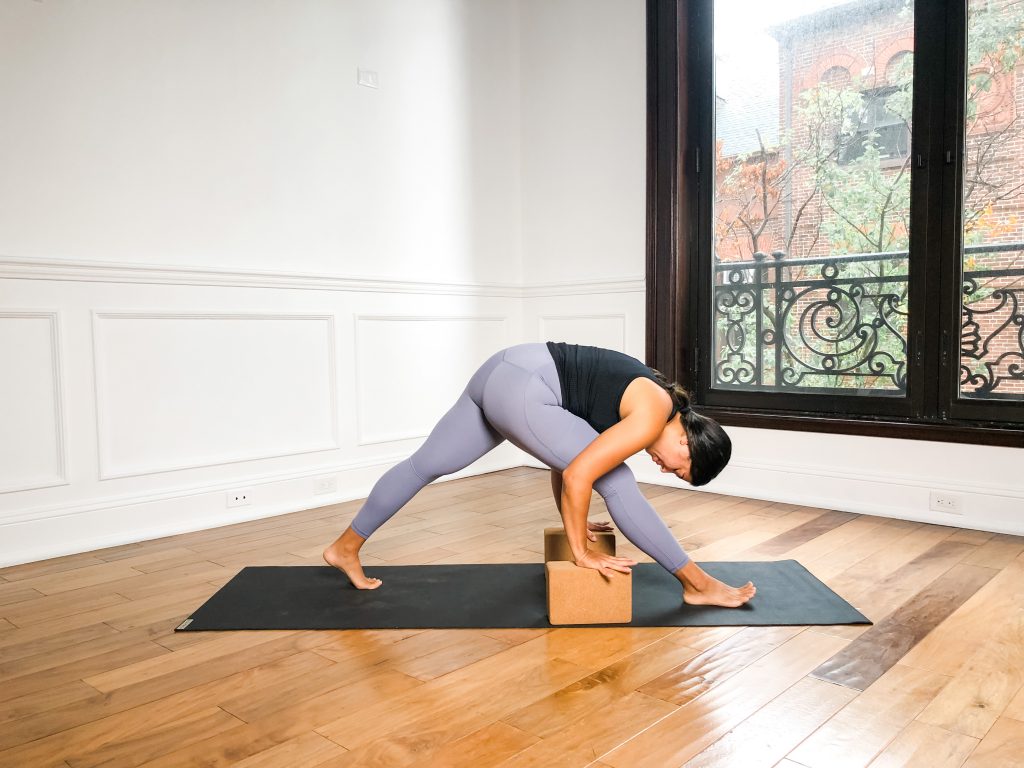
Wide Pyramid (aka Pyramid with the back heel lifted), puts practitioners in an optimal position to focus on straightening both legs, which of course is seen in our peak pose. There’s also an element of twisting here in this posture so the belly can fold over the front leg.
How to:
- From low lunge (right leg forward), straighten both legs. Blocks are a great tool here!
- Lift the kneecaps and press the root of the right thigh back. You can also lift the front toes as pictured to emphasize the ball of the big toe pressing down and to invite integrity through the leg.
- Lift the sit bones up as you fold your belly over the right leg. This requires a slight twist from left to right.
- Lower the nose towards the knee.
Supporting Pose 2: Triangle (Utthita Trikonasana)
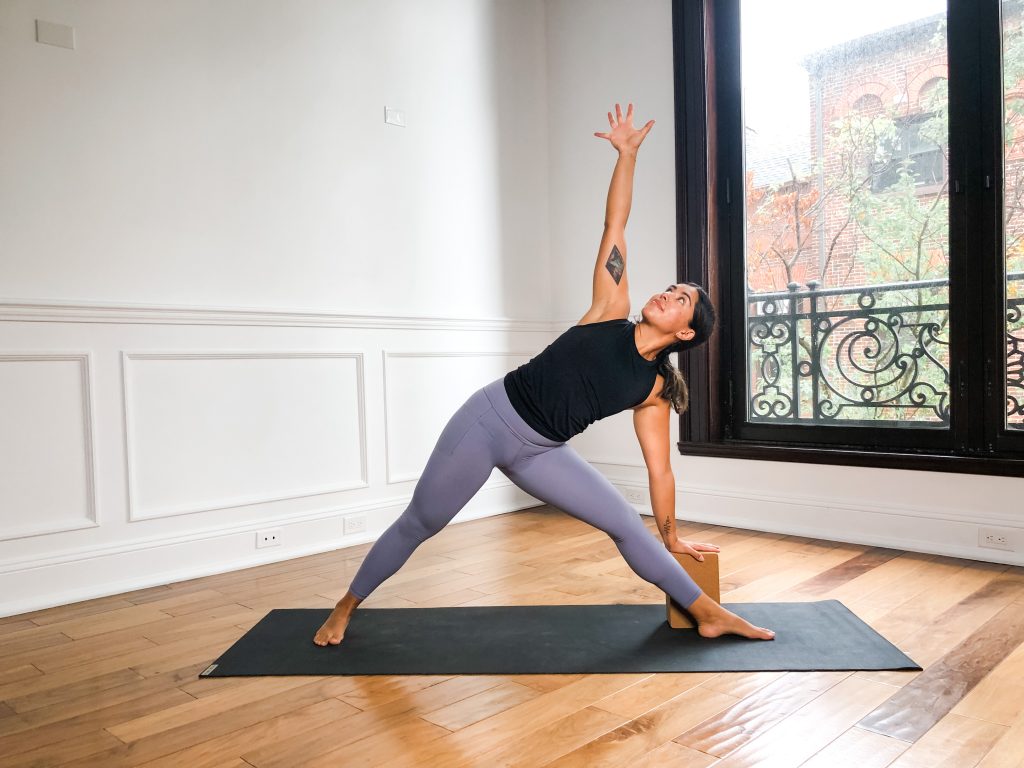
Like Pyramid, Triangle gives practitioners the opportunity to straighten the legs in an open hip manner which can be more accessible for many people. It also separates the hands and stretches the chest similar to UHC.
How to:
- From Warrior II (right leg forward), straighten the legs. Emphasize the four corners of each foot and lift the inner arches.
- Side bend over the right leg by pressing the root of the right thigh back and leaning the torso to the side.
- Bring the right hand down to a block on the outside of the leg (to the outside of the pinky toe).
- Stretch your left arm up to the ceiling to spread the chest.
- Your gaze can be towards the side wall or up to the ceiling.
Supporting Pose 3: Extended Hand to Big Toe Variation A (Utthita Hasta Padangusthasana A)
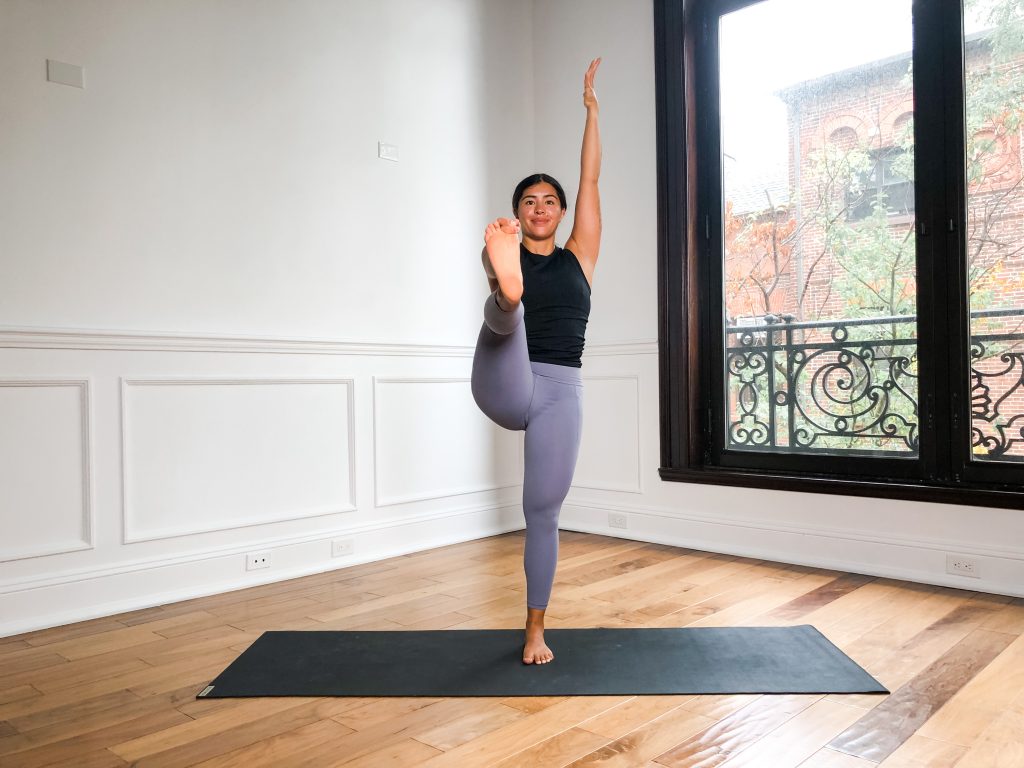
Once setting the foundation by having both feet on the ground and straight, we can progress by lifting one leg off the ground before we start to revolve. You can do Utthita Hasta Padangusthasana A (UHA) by wrapping the thumb, pointer finger, and middle finger around the big toe or another great variation is to take the sole of the lifted foot to a wall or chair.
How to:
- From mountain pose, lift the right leg off the ground with the knee bent and the thigh parallel to the floor.
- Slip the right arm along the inside of the right leg to wrap the thumb under the big toe and the pointer finger and middle finger around the top of the big toe.
- Press the four corners of the left foot down into the ground and do your best to straighten the leg by pressing the left thigh back. Ensure the pelvis stays in line though so firm the left glute slightly forward.
- Start to kick the right foot forward to straighten the right leg and reach the ball of the foot forward. If you’re using a wall, press the sole of the foot into the wall. If you’re using a chair, rest the heel of the seat or back of the chair and reach through the ball of the foot.
- Lift the kneecaps to create clear, straight legs.
- Spread the chest by engaging the right shoulder blade towards the spine and reach the left arm to the ceiling alongside the ear.
Extended Hand to Big Toe Variation C (Utthita Hasta Padangusthasana C)
How to:
- From UHA, cross your left arm under your right arm to take the left hand to the outside of the right foot (aka to the pinky toe edge). If the knee bends, it is ok! Try to maintain good alignment in the pelvis and chest.
- Reach the ball of the right foot forward into your hand and use that as an anchor to lean back and keep the chest lifted.
- Twist your torso towards the right, bringing the left side of your rib basket and left side of your chest towards the right. Try to let your belly be soft as you breathe and twist.
- Stretch the right arm towards the back of the room with the thumb facing the sky to spread the chest and the inner line of the arm.
- Try to follow your gaze to your right thumb.


